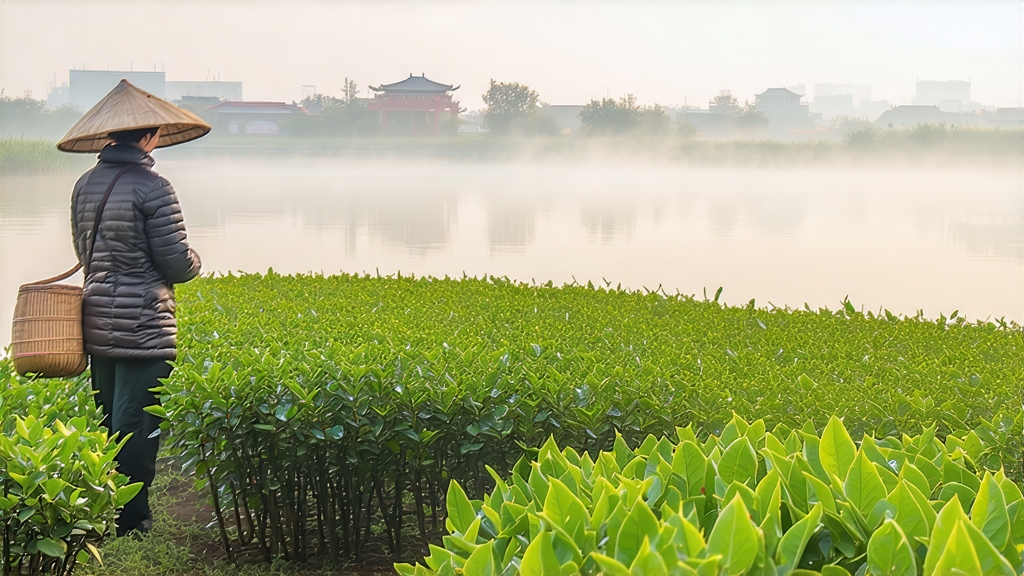
Tucked between the mist-laden banks of Lake Tai and the fruit-laden hills of Dongting Mountain in Jiangsu Province, Biluochun—literally “Green Snail Spring”—is one of China’s ten most celebrated teas, yet it remains a quiet revelation to many outside the Middle Kingdom. Its tiny, spiral-shaped leaves look almost ornamental, but once hot water meets them they explode into a kinetic bouquet of orchid, peach and fresh pea shoots, a sensory paradox that has seduced emperors and poets since the late Ming dynasty.
Historical whispers place the tea’s birth during the reign of the Kangxi Emperor (1662-1722). Originally named “Xia Sha Ren Xiang” (“Scary-fragrant” in local parlance) because its intoxicating aroma startled pickers, the emperor found the name inelegant and rechristened it Biluochun after the conical, jade-green curls that resemble a snail shell and the fact that it is harvested only in early spring. Imperial tribute status followed, and for three centuries the tea travelled in silk-lined chests to the Forbidden City, leaving behind poems that compare its liquor to “morning light trapped in liquid jade.”
Botanically, Biluochun is made from a diminutive cultivar, the Dongting小叶种 (small-leaf type), which develops slowly on rocky, acidic soil. The combination of lake humidity and mountain shade raises leaf amino acids, especially L-theanine, giving the tea its signature sweetness. There are two genuine appellations: Dongting Dongshan (East Mountain) and Xishan (West Mountain). Anything grown beyond these two peninsulas is considered “Zhejiang Biluochun” or simply green tea in spiral form; connoisseurs dismiss it as perfume without soul.
Crafting Biluochun is a race against dawn and dew. Picking begins around 5 a.m. when buds are still feathered in down and temperatures hover at 10 °C. Only the topmost “single bud with one unfolding leaf” is plucked—about 60,000 such sets yield one liang (50 g) of finished tea. The leaves are then spread in bamboo trays for two hours of withering, allowing grassy volatiles to dissipate. Next comes the most virtuosic step: pan-firing in woks heated to 180 °C. Masters use bare hands to toss, rub and roll the leaves against the scorching metal for precisely 3.5 minutes, killing green enzymes while shaping the iconic spiral. A second, cooler firing (130 °C) sets the curl and reduces moisture to 6%. The entire process must finish before noon so that the captured spring essence does not oxidize into summer boredom.
To brew Biluochun like a Suzhou scholar, choose a tall, thin glass or a 120 ml gaiwan; transparency lets you watch the “tea dance.” Use 3 g of leaf—about a heaping teaspoon—for every 100 ml of water cooled to 75 °C. Pour along the vessel wall to avoid scorching the downy tips. Steep 30 seconds for the first infusion, 20 for the second, then add five seconds for each subsequent pour; quality lots yield six clean brews. The leaves unfurl clockwise, a phenomenon locals call “the green snail waking up,” releasing a pale chartreuse liquor with a shimmering surface that carries notes of white peach, loquat and a fleeting hint of sweet corn.
Tasting is done in three sips: the first for fragrance, the second for texture, the third for aftertaste. Roll the liquor across the palate; a fine Biluochun will feel like silk embroidery sliding over marble—no rough edges, no tannic bite. Swallow and wait; within seconds a cool, orchid-like sweetness should rise at the back of the throat, a sensation known as hui gan. If you detect astringency, either the water was too hot or the tea is a later spring pick.
Because of its delicacy, Biluochun pairs exquisitely with subtle foods: steamed river shrimp, fresh tofu dressed with spring onions, or water-chestnut cake. Avoid citrus, chocolate or anything smoked; they bully the tea’s whispered complexities. Store the leaves in an opaque tin, nested inside a refrigerator set to 5 °C, but always allow the sealed tin to reach room temperature before opening—condensation is the silent killer of aroma.
Today, Biluochun remains a cultural touchstone in Suzhou. Every April, Dongshan villagers